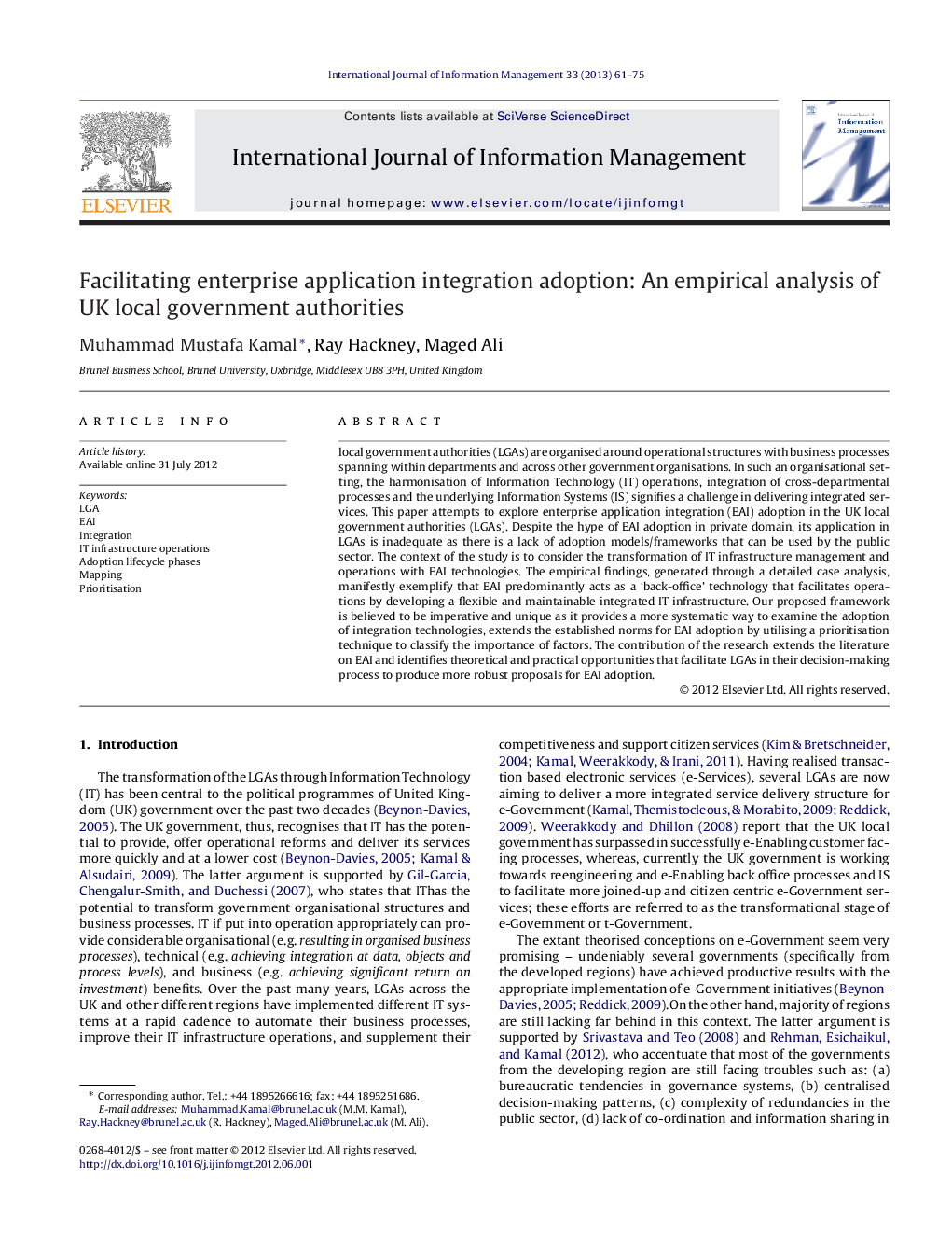| Article ID | Journal | Published Year | Pages | File Type |
|---|---|---|---|---|
| 1025872 | International Journal of Information Management | 2013 | 15 Pages |
local government authorities (LGAs) are organised around operational structures with business processes spanning within departments and across other government organisations. In such an organisational setting, the harmonisation of Information Technology (IT) operations, integration of cross-departmental processes and the underlying Information Systems (IS) signifies a challenge in delivering integrated services. This paper attempts to explore enterprise application integration (EAI) adoption in the UK local government authorities (LGAs). Despite the hype of EAI adoption in private domain, its application in LGAs is inadequate as there is a lack of adoption models/frameworks that can be used by the public sector. The context of the study is to consider the transformation of IT infrastructure management and operations with EAI technologies. The empirical findings, generated through a detailed case analysis, manifestly exemplify that EAI predominantly acts as a ‘back-office’ technology that facilitates operations by developing a flexible and maintainable integrated IT infrastructure. Our proposed framework is believed to be imperative and unique as it provides a more systematic way to examine the adoption of integration technologies, extends the established norms for EAI adoption by utilising a prioritisation technique to classify the importance of factors. The contribution of the research extends the literature on EAI and identifies theoretical and practical opportunities that facilitate LGAs in their decision-making process to produce more robust proposals for EAI adoption.
► EAI is a ‘back-office’ technology that facilitates operations by developing a flexible and maintainable IT infrastructure. ► A systematic approach to improve the decision making process for EAI adoption in LGAs. ► The practical implications of mapping the factors on phases can support in better understanding the usefulness of factors. ► Prioritising the importance of factors on adoption lifecycle phases can further enhance the decision-making process.
